Physicians' Gallery Newsletter
Updates on upcoming events, exhibitions and online stories
Empowering medical excellence, shaping healthcare futures.
The original source of the phrase ‘bruised reeds’ is Biblical, referring to the kindness of Jesus…
He will not quarrel or cry aloud,
nor will anyone hear his voice in the streets;
a bruised reed he will not break,
and a smouldering wick he will not quench
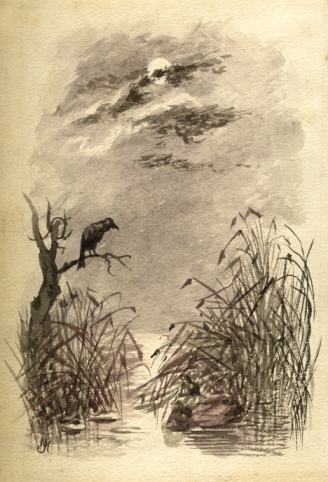
The bruised reeds referred to in the title of this blog are not Biblical, however. They are patients, inmates during the late 1800s at the Royal Edinburgh Hospital - the city’s main asylum.
The title ‘bruised reeds’ is a contemporary one - etched on the cover of a bound volume of drawings of patients at the asylum.
The first page of the volume is fittingly illustrated with a depiction of such reeds, alongside a raven and an overcast moon. The inclusion of the moon may be a reference to the historical association between phases of the moon and mental health - the origin of the terms ‘lunacy’ and ‘moonstruck’.
This collection of illustrations is particularly unusual because it is an example of artwork where both the subjects and the artist were asylum patients.
The artist was John Miles (also referred to as Myles), who was admitted to the Royal Edinburgh Hospital in 1881. Noted as ‘not dangerous’ but very depressed, Miles’ patient records describe him as ‘very taciturn – everything is wrong’. His stay at the asylum was relatively brief and appears to have been beneficial, for he was discharged less than a year later. It is likely that he was requested to sketch these portraits of other patients before he left as they appear to be drawn from life.
The twelve illustrations within the volume demonstrate a range of mental health complaints, treatments and outcomes. They also provide some insight into the histories and experiences of the patients they depict.
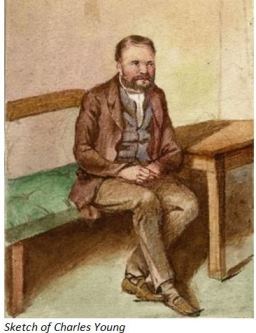
Charles Young, for example, was a cabinet maker. According to the notes accompanying his image, Young ‘supposes he’s wealthy and has armies and navies every thing on a tremendous scale. Seems to have been a good singer. Sings snatches of quaint songs, is known as ‘The Marquis’.
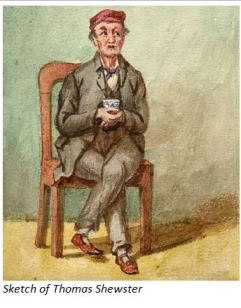
The subject of this portrait, Thomas Shewster, was admitted to the Royal Edinburgh Hospital five times in the late 1800s. His notes record: ‘Shock through disappointment in love. Is usually very quiet and very domestic. Washes dishes, Hearth and floors. When unemployed has a far away look. Will do anything he’s asked for a cup of Tea. Is likely to recover’.
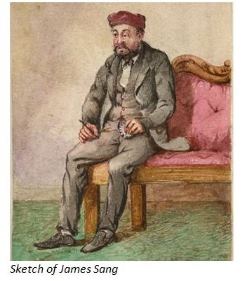
Another portrait, that of James Sang, describes the patient as ‘Clever Engineer & Inventor. Fancies he owns immense machinery self invented for all purposes, is married to the Queen &c’.
Some cases were seen as impossible to help and the descriptions of these cases make for particularly difficult reading. This includes William Beattie, pictured below. Beattie was described as a ‘Deaf-mute, Lame. Voracious, Dirty, Savage. Age about 47. Hopeless case’.
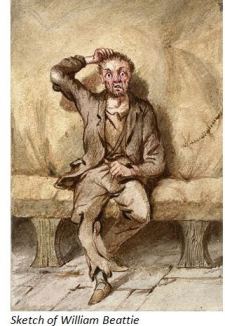
This volume of illustrations is part of our College's archives (reference DEP/ANO/9). Some of the information detailed above relating to John Miles and Thomas Shewster was provided by the Lothian Health Services Archive. You can email them at LHSA@ed.ac.uk for more information about their collections.
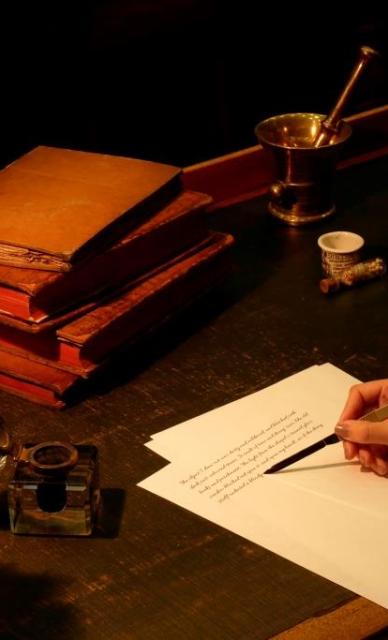
Updates on upcoming events, exhibitions and online stories